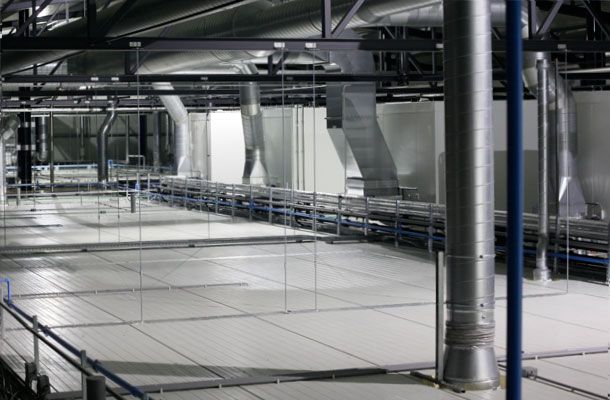The importance of hatchery climate to chick quality
Tags: Climate control | Blog
, 27 October 2014

In my visits to many hatcheries around the world, a mistake that I regularly encounter is that hatchery managers underestimate the importance of managing the climate around the setters and hatchers. They think that providing climate inside the incubators is maintained according to the incubation programme’s predefined set points, external climate is irrelevant.
I remember a case where the manager of a broiler farm complained that many chicks were dehydrated on arrival, despite a relatively short transport distance. On investigating the situation in the hatchery, I discovered during take-off that several chicks did indeed show dry legs in combination with developed wing feathers, but from the same hatch cycle a number of baskets contained chicks that were just fine and in some cases, even still slightly wet.
This clearly indicated an extended hatch window, and indeed total incubation time had been increased by several hours to prevent the incidence of chicks that were too wet for pulling. Meanwhile, chicks hatching at more or less the correct time were suffering from dehydration. Reviewing the hatcher climate graphs, I noticed the virtual absence of a humidity peak; the emerging chicks were unable to boost humidity to the levels I would normally expect during the final stages of incubation, which also contributed to dehydration in the hatched chicks.
At the same time, there was nothing disturbing in the setter climate graphs. Relative humidity was nicely at set point all the time and egg weight loss at transfer was also normal. However when I looked at how the setter was running, I noticed that in order to keep relative humidity at set point with gradually increasing ventilation, almost constant humidification was needed. This is not desireable, as overly-active humidifiers will produce cold-spots in the setter that ultimately extend the hatch window.
The reason for this over-humidification, as well as for the low humidity peak in the hatchers, was soon clear. Relative humidity of the inlet air was only between 30-40 per cent and heating this air up to incubation temperature was only serving to further reduce that percentage. Adjusting climate in the hatchery to within the recommended range, in this case by humidifying air in the inlet plenums, rectified the situation. The expected humidity peak in the hatcher was restored and with that, the hatch window normalised such that the broiler farm manager received chicks of a consistently good quality once again.
Written by Martin Barten
Senior Hatchery Specialist
I welcome your feedback on this article - and if you require any additional information, please don't hesitate to contact me.